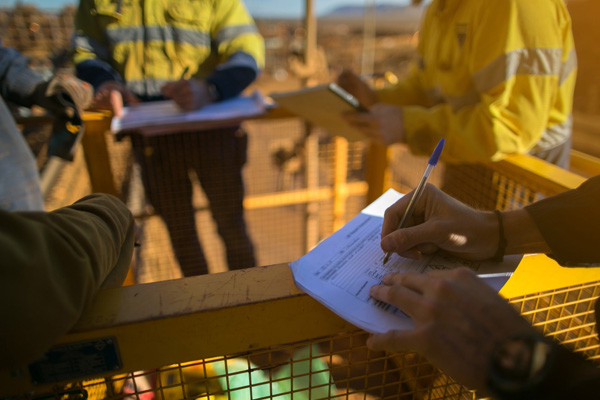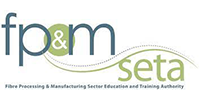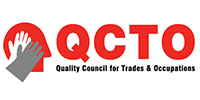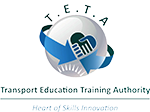We at EMCARE acknowledge the tide of change brought about by the Covid-19 pandemic, and understand what it means for our education system – in particular – our occupational health and safety courses. Since the onset of the pandemic, the world of work has completely changed. Many industries have moved online and will never return to the traditional work setting. For this reason, the world of occupational health and safety is forever changed. In just a few minutes of reading, find out all you need to know about the future of occupational health and safety training and what we at EMCARE are doing to keep up with the times.
What is occupational health and safety today?
Occupational health has to do with the impact that work has on health, and health on work. The main objective of occupational health and safety is to reduce the risks of both mental and physical detrimental conditions that may arise due to work. Some common physical conditions (most frequently associated with the construction industry) include:
- Hearing loss
- Hand-arm vibration
- Asthma
Health issues induced by work can also manifest in the form of mental health problems, such as stress, depression, burn-out and general anxiety. Sometimes employees can bring these problems in to work, and in many cases they can be worsened by the working environment. Regardless, it is – in most cases – the responsibility of the employer or health and safety officer to manage these occupational health issues. Staff are the most important part of any business, and are crucial to its success.
This is why occupational health and safety courses are both invaluable and highly sought-after. Staff can be put at risk in a number of ways in the workplace. Naturally, some workspaces and industries carry more risks than others. For example, in some working environments where heavy machinery is operated, staff may experience hearing loss or high stress levels that may compound to cause them to falter in their responsibilities.
In other industries, excessive chemicals in the breathable environment may be hazardous if absorbed through the respiratory system or even through the skin. These types of dangers can become the cause of eye and skin irritation, nerve and muscle damage, respiratory disease as well as cancer in some cases. With these dangers in mind, it makes sense that individuals are trained in occupational health and safety training in order to keep employees and the work environment safe.
The future of team work in occupational health and safety courses
Those involved in the occupational health and safety sector will know that their top priority is keeping staff physically and mentally healthy to the best of their ability. For larger companies, this can be a daunting task for one individual to manage on their own. For this reason, working as a group to form a joint effort is always advisable when possible. More and more, occupational health and safety courses focus on teamwork.
Together, occupational health and safety personnel can run quick and efficient risk assessments that, if done correctly, will lessen the chances of accidents and injury in the workplace.

A new focus
Occupational health and safety courses of the future need to show consideration to the fact that more access to care is needed. Around 45% of the human population – and 58% of the population over 10 years of age – are part of the global work force. A World Health Organisation study recently revealed that it is unhealthy working conditions that significantly add to the “burden of disease” in many regions. Some major occupational risks that are associated with burden include:
- Injuries – 40%
- Noise – 22%
- Carcinogens – 18%
- Airborne particulate matter – 17%
- Ergonomic hazards – 3%
In preparation for these burdens, the World Health Organisation came up with a global occupational health strategy back in 1994. The strategy called for all countries to exhibit a “progressive development of occupational health services with the ultimate objective of covering all workers with such services irrespective of the sector of economy, size of company, occupation, mode of employment, or nature of self-employment.” The strategy further added that most people spend at least one-third of their adult life working in hazardous environments, and that around 120 million occupational-related accidents (with some 200,000 fatalities) occur each year.
To add further insult to injury, the costs that were involved in these health hazards amounted to a notable per cent of the GDP of some countries. Despite these startling facts, only 5-10% of working individuals in developing countries – and 20-50% of the workforce in industrialised countries – have access to appropriate occupational health and safety services. In developing countries such as South Africa, the need for well-trained individuals having completed health and safety courses is paramount to making the occupational world a safe one. We at EMCARE are committed to providing occupational health and safety courses of the highest quality, seeing as we understand the importance of thorough education and qualification in the health and safety industry.
Current challenges to the world of occupational health and safety
Around the globe, there are a variety of challenges that face the occupational health provision. Many of these issues are linked with new information technology and automation; health hazards associated with new biotech; new chemical substances; an ageing working population as well as the cumulative “special problems” of the handicapped, migrants, chronically ill as well as the unemployed.
One issue, as an example, is fracking – which is affecting workers across several industry sectors in the United States. An article in the US journal of Occupational Medicine, some interesting and important issues that need addressing on the matter were pointed out. For starters, the development of the practice (with the aim of increasing energy output in the country) has brought with it numerous new risks to the workforce. This mainly affects those involved in drilling and other activities that have to do with extracting oil and gas – up to the point where they are shipped.

Meanwhile, the issue of job automation and robotics grows ever more prevalent in the world of occupational health and safety. Many jobs that, in the past, have been done by humans, are now being fulfilled by machines. This has come to disrupt the labour market in many of its most significant sectors. With robotic workers working alongside human employees, there are bound to be some issues. For example, these conditions pose a new variety of risks, such as the vulnerability of human workers next to automated machines.
There has been much media activity already concerning human workers being injured or even killed by automated machines, or “robots”. One example is the Volkswagen employee working at an assembly line – whose chest was crushed as an automated machine gripped hum and pressed him against a metal plate in 2015 in Germany. This incident is not a lonely one. Around the world, occupational health and safety professionals have no other choice than to take proactive measures when it comes to safety in technologically advanced workspaces.

Challenges of the future
Several academics from the University of Washington suggested, in their paper titled “Creating a Future for Occupational Health”, suggested that the recent changes in the working world will result in job insecurity to a large portion of the workforce. In South Africa, the first lockdown period showed the way in which many working citizens depend on their day-to-day earning for their survival – and highlighted job insecurity in many industries.
The paper claims that “workforce demographics are changing, and economic disparities among working groups are growing. Globalization exacerbates the ‘race to the bottom’ for cheap labour, poor regulatory oversight, and limited labour rights. Largely, as a result of these phenomena, the historical distinction between work and non-work exposures has become largely artificial and less useful in understanding risks and developing effective public health intervention models.”
Additionally, changes relating to governmental regulatory limitations, inadequate surveillance systems as well as climate change can both challenge and frustrate the progress of occupational health. On the other side of the coin, new information technology and innovative biomedical tech is working to expand the reach of occupational health and understanding which will allow professionals to better assist workers under their care.
In response to the abovementioned challenges, governments have been charged by the World Health Organisation to pay mind to 10 priority objectives that have to do with the development of occupational health at both international and national levels. These objectives include bolstering policies for health at work as well as developing appropriate tools to do so. Some other key objectives are as follows:
- Developing healthy work practices
- Establishing effective data and registration systems
- Utilising effective data transmission
- Raising of public awareness
These objectives largely reflect the importance of primary prevention in the occupational health and safety industry. The role of a country’s government is crucial in achieving this objectives, since they will be the ones to set the standard under their own jurisdiction.
Becoming equipped with occupational health and safety courses
In general, occupational health and safety courses and similar forms of training are evolving into a more holistic and public health-oriented model of worker health. For this to be possible, training facilities, like us at EMCARE, must constantly aim to broaden our training portfolios and content matter to prepare health and safety candidates for the changing world of occupational health and its relevant challenges. As previously mentioned, psychological and stress issues amongst the workforce are increasing as the result of the he rapid changes in modern work life. Some of these matters include:
- Learning new skills
- Pressures of higher productivity
- Time and work quality pressure
- Adapting to new types of work
With these issues in mind, our course content is carefully curated and frequently updated. More attention and resources always needs to be given to matters within occupational health that can, in the end, play a large role in ensuring optimal work quality, productivity, work satisfaction and motivation of a high level.

Why take part in occupational health and safety courses at EMCARE?
We at EMCARE offer both theoretical and practical occupational health and safety courses that will set you, or your employees, well onto the path of success. They will equip participants to deal with the future of the occupational health and safety industry, by giving participants the necessary tools and information needed to start them on their journey into this exciting and crucial part of the working world.
From the course content lists available on our site, one can see for themselves the exhaustiveness of this brief yet effective training course. Both individuals and groups are welcome to attend, and certificates are awarded to participants after completion. Should you require more information or have any questions at all pertaining to our occupational health and safety courses – or any related training – please do not hesitate to contact us.















